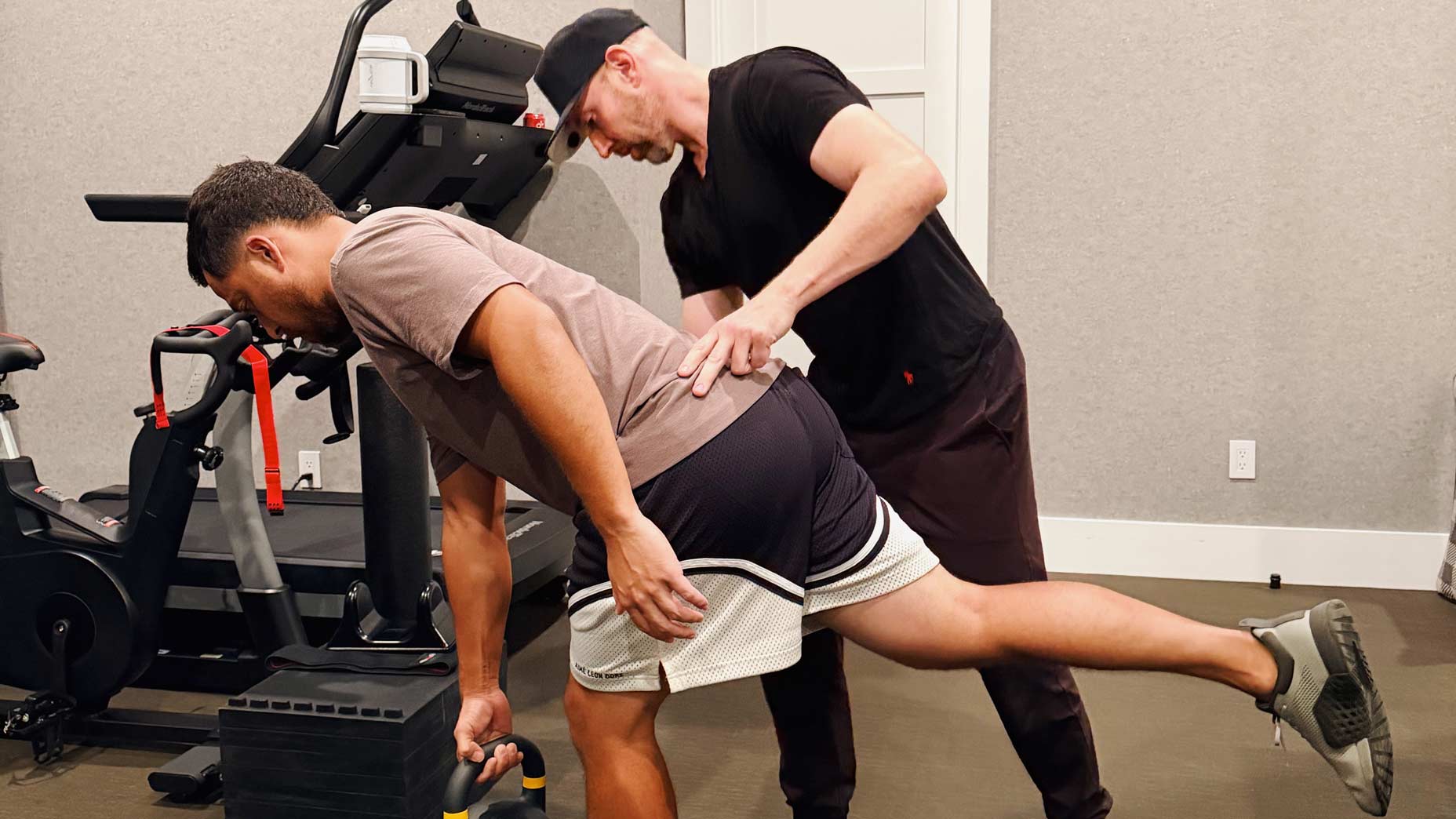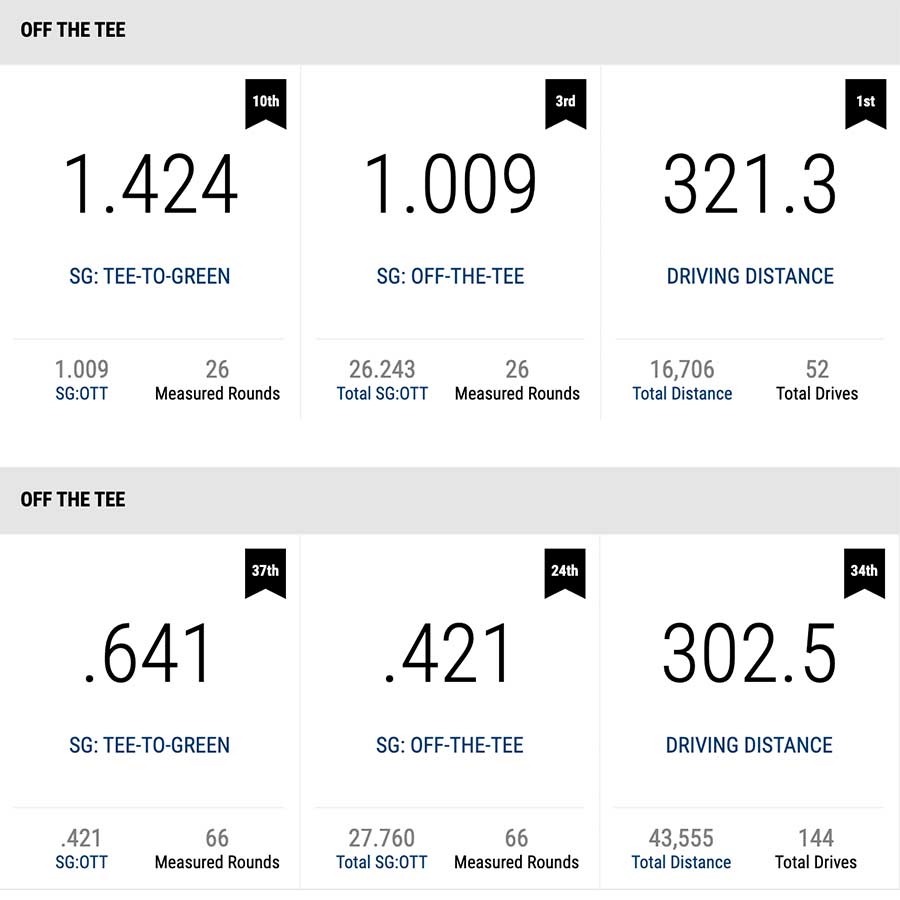 I followed a PGA Tour trainer’s strength routine. The results shocked me
I followed a PGA Tour trainer’s strength routine. The results shocked me
How’d he do that? Inside Bryson DeChambeau’s quest to get ‘massive’
When Bryson DeChambeau first announced in October that he wanted to get “huge,” it was easy for the golf world to write it off as just Bryson being Bryson. But six months later, it’s impossible to miss the drastic physical changes he’s manifested. At the Hero World Challenge and Presidents Cup in December, he looked bulky. At the Dubai Desert Classic in January his frame was clearly larger, but instead of just looking bulky, he look…jacked?!

DeChambeau’s physical change shouldn’t come as a surprise, as he’s shared plenty of videos of himself working out and has done so multiple times a day, accumulating up to three or four hours in the gym at the height of his training.
The numbers don’t lie either. DeChambeau now leads the Tour in driving distance with an average of 321 yards, when compared to this time last year, he was hitting drives just 302 yards. But how does a video-game loving, self-professed science nerd build the body of a linebacker in such a short period of time?
Muscle Activation Techniques (MAT), that’s how.
ADVERTISEMENT

Greg Roskopf, founder of the Muscle Activation Techniques program, likens the process to taking your car to a mechanic. “If you have a fine-tuned car, and you’re driving it at a high level, it’s functioning very efficiently,” Roskopf said. “But as soon as the alignment starts to get off or the engine gets out of tune, then the car’s going to break down that much faster.”
Our bodies are similar. DeChambeau first came to Roskopf because of pain from a nagging back injury he suffered when he was younger. While DeChambeau’s body had adapted to playing golf, at 24 years old, he “already had [muscle imbalances] that were leading to back pain.”
DeChambeau thought he’d need surgery, until he spoke to Roskopf.
“He was like, ‘No, no, no, don’t do any of that, we’re going to teach your body to tolerate the force,'” DeChambeau said. “Usually when ligaments get torn or bones get broken or whatever it’s because the muscles aren’t functioning properly, so that’s what I’ve been doing.”
What’s more, our bodies are instinctively hardwired to protect us — if you think about walking on ice, your body automatically tenses up in response to the lack of stability on the slippery surface. The same occurs in your muscles when you suffer an injury or have an imbalance — the opposite side muscles tighten, limiting your range of motion in an effort to help stabilize your body through a certain movement. And when your muscles tighten up, swinging a golf club well becomes very difficult.
In applying this approach, Roskopf identified that DeChambeau’s left side was weaker, putting pressure on his dominant right side in the golf swing and causing his back pain. So the first thing Roskopf did was stimulate the weak muscles to improve the neuromuscular communication between DeChambeau’s brain and his muscles, teaching them to contract through the full range of motion.
Once the metaphorical ice was melted in DeChambeau’s body, Roskopf had him move through a workout regimen that focused on isolating specific muscles and training them through their complete ranges of motion. This helped increase DeChambeau’s flexibility while simultaneously making him stronger.
“We look at where the weak links are in this integrated system (of the golf swing),” Roskopf said. “And then we improve the ability for the muscles to function relative to his weak links, then all of a sudden, they’re along for the ride and now he has more muscles to help him perform his golf swing.”
Of course, as DeChambeau is wont to do, he’s taken his rebuild to another level.
https://www.instagram.com/p/B3-oN3OB6OC/
According to Roskopf, performing isolated strength training exercises into the shortened ranges of motion has helped DeChambeau unlock even more power. “He’s working at such a higher level, and now he can have more strength in all of the isolated parts, which in turn means more strength in the integrated system,” Roskopf said.
Roskopf’s program is why DeChambeau has been able to make such incredible strength gains in such a short period of time. In terms of the golf swing, MAT has balanced DeChambeau’s muscles so they pull equally and helped him build more muscle and improve his flexibility. This means a more powerful swing.
The best part is that you don’t have to be a professional athlete to see these results. There are certified MAT professionals all over the country that can apply the same process DeChambeau went through to rebuild his body into a bomb-hitting machine.
To receive GOLF’s newsletters, subscribe for free here.
ADVERTISEMENT




